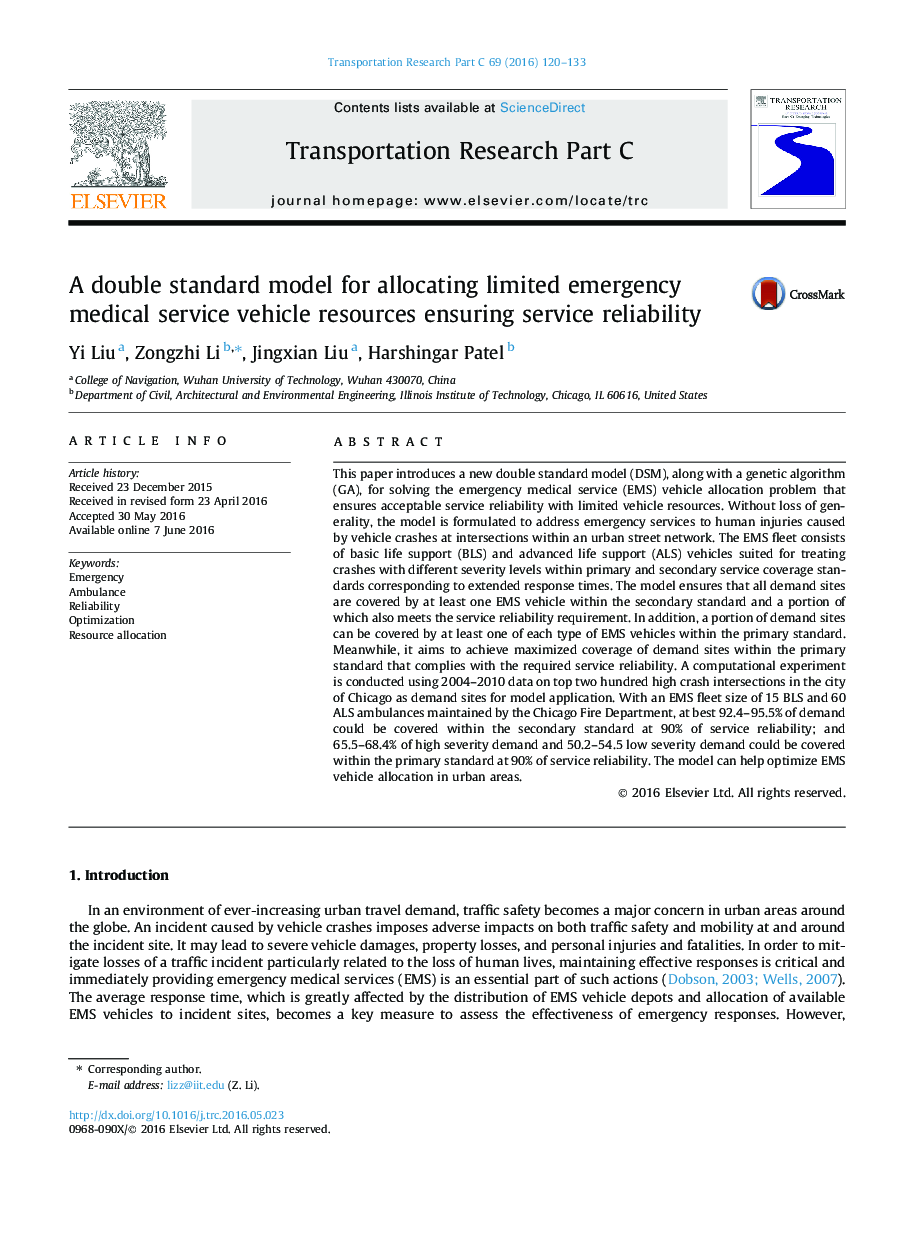| کد مقاله | کد نشریه | سال انتشار | مقاله انگلیسی | نسخه تمام متن |
|---|---|---|---|---|
| 524722 | 868851 | 2016 | 14 صفحه PDF | دانلود رایگان |
• An extension of double standard model is proposed.
• Required service reliability is ensured by chance constraints in model formulation.
• Vehicle allocation is more efficient and reliable than those of the previous model.
This paper introduces a new double standard model (DSM), along with a genetic algorithm (GA), for solving the emergency medical service (EMS) vehicle allocation problem that ensures acceptable service reliability with limited vehicle resources. Without loss of generality, the model is formulated to address emergency services to human injuries caused by vehicle crashes at intersections within an urban street network. The EMS fleet consists of basic life support (BLS) and advanced life support (ALS) vehicles suited for treating crashes with different severity levels within primary and secondary service coverage standards corresponding to extended response times. The model ensures that all demand sites are covered by at least one EMS vehicle within the secondary standard and a portion of which also meets the service reliability requirement. In addition, a portion of demand sites can be covered by at least one of each type of EMS vehicles within the primary standard. Meanwhile, it aims to achieve maximized coverage of demand sites within the primary standard that complies with the required service reliability. A computational experiment is conducted using 2004–2010 data on top two hundred high crash intersections in the city of Chicago as demand sites for model application. With an EMS fleet size of 15 BLS and 60 ALS ambulances maintained by the Chicago Fire Department, at best 92.4–95.5% of demand could be covered within the secondary standard at 90% of service reliability; and 65.5–68.4% of high severity demand and 50.2–54.5 low severity demand could be covered within the primary standard at 90% of service reliability. The model can help optimize EMS vehicle allocation in urban areas.
Journal: Transportation Research Part C: Emerging Technologies - Volume 69, August 2016, Pages 120–133
